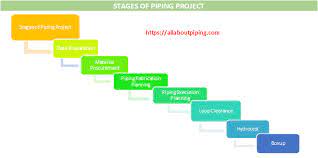Construction projects concern water and other fluids. To provide for their proper handling, piping systems are made. These include a vast and diverse range of piping systems CAD drafting companies can assist with any of these systems). These are prepared as per the specific fluid involved. Similarly, the involved components are used specifically for the fluid involved.
Different Fluids
Fluids are chemicals that flow smoothly. These include both liquids and gases. Some are almost harmless and help just as water. But they can get problematic if not handled properly. On the other hand, there are toxic and contaminating fluids such as mercury. Their capacities to damage anything differs from each other as is their need for insulation from the outside.
Hence, all of them are handled in different manners. Different manufacturing materials are used to build the required piping systems. While certain components are particularly added for certain fluids.
Piping Systems, its Different Types
A piping system is simply an assembly of various elements capable of transporting fluids. These are built and named as per the nature of fluids involved and the scope of the system.
These systems can be:
- Water Supply Systems
- Drainage Piping Systems
- Power Plant Piping Systems
- Medical Gas Piping Systems
- Chemical Plant Piping Systems
- HVAC Piping Systems
- Compressed Gas Piping Systems and numerous others
What Do the Components Differ Between Different Piping Systems?
The components differ in different piping systems. This is due to many reasons. Some of these are as follows:
Since the fluids differ in their nature to damage and other qualities, they need different components. For example, in the case of water, the pipe can rust from the inside if regular iron is used. While some toxic materials such as liquid metals will require reinforced pipes. All this depends on the nature of the fluids concerned. The more harmful the fluid is the more reinforced the pipes are needed.
In addition to that, certain components are specific to certain fluids and piping systems. For example, for fluids involving pressure such as compressed gasses, and combustion processes for liquids and metals. These include components such as ball valves, pressure regulators, and others.
Among the various variations, insulation plays a vital role. The presence, absence, thickness, and thinness define the nature of fluids. A less toxic might have no or very little insulation. While a highly toxic fluid needs thick insulation for safe transportation.
Processes involved with the system also differ in the nature of piping systems. For example, as fractional distillation is involved, it includes more outlets for the steams. Drainage systems could be concerning rainwater or wastewater. Both would include different components.
The type of project involved also has a strong role in the nature of components required. Residential projects are too simple and thus require simple and less graded materials. Commercial projects include more strengthened and industrial required particularly industrial grade components.
These and other reasons why different piping systems constitute different components.
Some Common Components Used in Different Piping Systems
Despite the vast diversity all of the various piping systems used in the world include some archetype piping components. These are:
|
|
Conclusion
Piping systems are a vital requirement for all the different projects as they transport fluids. These include a diverse range of fluids including harmless water to highly toxic molten metals and acids. For these their specific piping system and constituting components are used. These vary due to many reasons such as the nature of the fluid, project, and piping system involved. As a result, components differ roughly in various manufacturing materials, specific elements, and insulation.


